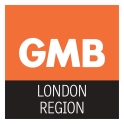School pupil numbers up 21.5% in London since 2010

Numbers of school pupils in London up by 21.5% between 2010 and 2019 shows necessity of bringing forward government investment in schools to before 2022
It doesn’t take Einstein to work this one out, if pupil numbers have consistently risen since 2015 then why doesn’t the Government’s funding formula for schools add up, says GMB London
A new study by GMB London Region has found that the number of state-funded school pupils in London has risen by 21.48% between 2010 and 2019.
In 2010 in London there were 1,070,000 pupils enrolled in state-funded schools. Now in 2019 there is 1,299,878 pupils enrolled. This is an increase of 21.48%.
Southwark was the London borough that has seen the biggest increase in school numbers since 2010, with a 49.32% increase. This is followed by Hackney with a 42.28% increase, Richmond with a 34.15% increase, Westminster with a 33.34% increase, and Barking and Dagenham with a 30.57% increase.
The study comes after the School Cuts Coalition, made up of GMB, the National Education Union (NEU), the Association of School and College Leaders (ASCL), the National Association of Head Teachers (NAHT), Unison and Unite published analysis that found four out of five schools will be worse off next year than in 2015, despite the government’s pledge to put an extra £2.6 billion into schools next year.
The figures covering 33 boroughs in London are set out in the table below, ranked by the highest increase in school pupil numbers between 2010 and 2019. This is from a new study by GMB London Region of official data for 33 boroughs in London. It compares the number of pupils enrolled at state-funded schools in London boroughs in 2010 and 2019, and shows the increase as a percentage. [See notes to editors for sources and definitions.]
|
|
|
2010 Pupil Numbers |
2019 Pupil Numbers |
% increase between 2010 and 2019 |
|
|
LONDON |
1,070,000 |
1,299,878 |
21.48% |
|
|
|
|
|
|
|
1 |
Southwark |
29,149 |
43,525 |
49.32% |
|
2 |
Hackney |
24,549 |
34,929 |
42.28% |
|
3 |
Richmond upon Thames |
20,743 |
27,826 |
34.15% |
|
4 |
Westminster |
17,032 |
22,711 |
33.34% |
|
5 |
Barking and Dagenham |
33,393 |
43,601 |
30.57% |
|
6 |
Croydon |
45,477 |
58,213 |
28.01% |
|
7 |
Newham |
50,686 |
63,676 |
25.63% |
|
8 |
Lambeth |
30,244 |
37,909 |
25.34% |
|
9 |
Kensington and Chelsea |
10,814 |
13,447 |
24.35% |
|
10 |
Hammersmith and Fulham |
16,684 |
20,741 |
24.32% |
|
11 |
Barnet |
47,830 |
59,434 |
24.26% |
|
12 |
Harrow |
30,141 |
37,220 |
23.49% |
|
13 |
Merton |
23,258 |
28,720 |
23.48% |
|
14 |
City of London |
233 |
285 |
22.32% |
|
15 |
Hillingdon |
42,745 |
52,119 |
21.93% |
|
16 |
Sutton |
32,103 |
39,119 |
21.85% |
|
17 |
Lewisham |
33,019 |
40,191 |
21.72% |
|
18 |
Greenwich |
36,229 |
44,000 |
21.45% |
|
19 |
Hounslow |
36,566 |
44,281 |
21.10% |
|
20 |
Ealing |
45,106 |
54,512 |
20.85% |
|
21 |
Brent |
40,235 |
48,459 |
20.44% |
|
22 |
Redbridge |
48,274 |
57,635 |
19.39% |
|
23 |
Islington |
20,719 |
24,514 |
18.32% |
|
24 |
Wandsworth |
29,106 |
34,380 |
18.12% |
|
25 |
Enfield |
49,680 |
57,977 |
16.70% |
|
26 |
Tower Hamlets |
38,846 |
45,334 |
16.70% |
|
27 |
Kingston upon Thames |
22,479 |
26,166 |
16.40% |
|
28 |
Bexley |
38,040 |
43,918 |
15.45% |
|
29 |
Waltham Forest |
37,214 |
42,821 |
15.07% |
|
30 |
Haringey |
34,733 |
38,649 |
11.27% |
|
31 |
Bromley |
46,798 |
51,379 |
9.79% |
|
32 |
Havering |
36,119 |
39,409 |
9.11% |
|
33 |
Camden |
21,758 |
22,778 |
4.69% |
Keith Williams, GMB Regional Senior Officer said:
“The Government’s commitment to provide schools extra funding of £7.1 billion over the next three years, is no more than smoke and mirrors, as schools will not see the additional funding until 2022, during which time our Education system will see a shortfall of £1.1 bn.
“The figures researched by GMB clearly show that there has been a consistent rise in pupil numbers since 2015, however, 80% of schools in England will receive less funding per pupil in real terms in 2020 as compared to 2015.
“Pupil numbers have been rising since 2010 but the changes since 2015 are significant as pupils that started school in 2015 will have seen no relief by 2021 in 83 per cent of schools meaning their whole school career will have been affected by cuts.
“The reality is that as a consequence of the maths of the Government, hardworking and dedicated school support staff will be expected to bear the brunt of the consequences of reduced funding, for example been given extra responsibilities and duty’s without been paid for it.
“It doesn’t take Einstein to work this one out, if pupil numbers have consistently risen since 2015 then why doesn’t the Government’s funding formula for schools add up.”
ENDS
Contact: Keith Williams 07710 631339 or GMB London Press Office 07970 114762
Notes to Editors
1] Sources and Definitions
All schools: Number (headcount) of pupils by type of school, by local authority area and region in England on the January of each calendar year
Including: state-funded nurseries, primary schools, secondary schools and SEN schools.
Excluding: Independent schools, SEN non-maintained schools and pupil referral units.
Sources: Schools, Pupils and their Characteristics - Local Authority Tables, ONS based on DfE data. https://www.gov.uk/government/collections/statistics-school-and-pupil-numbers


